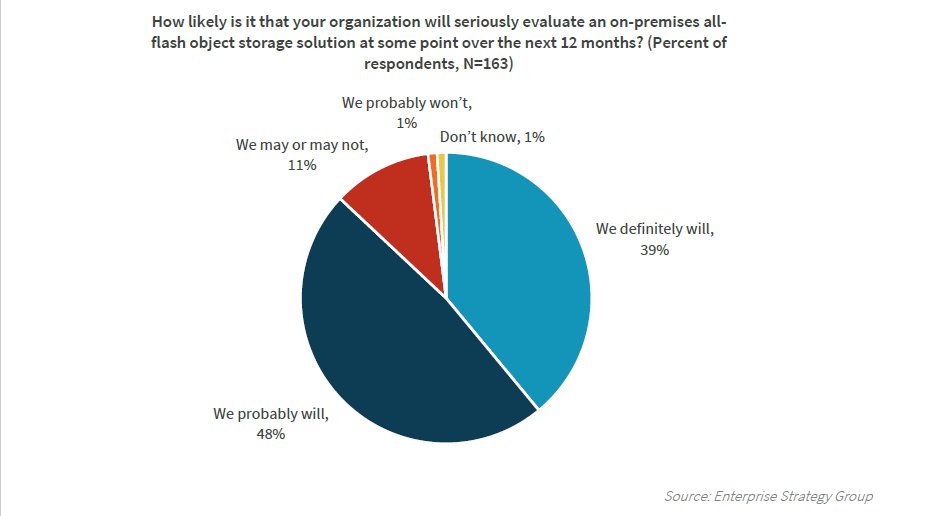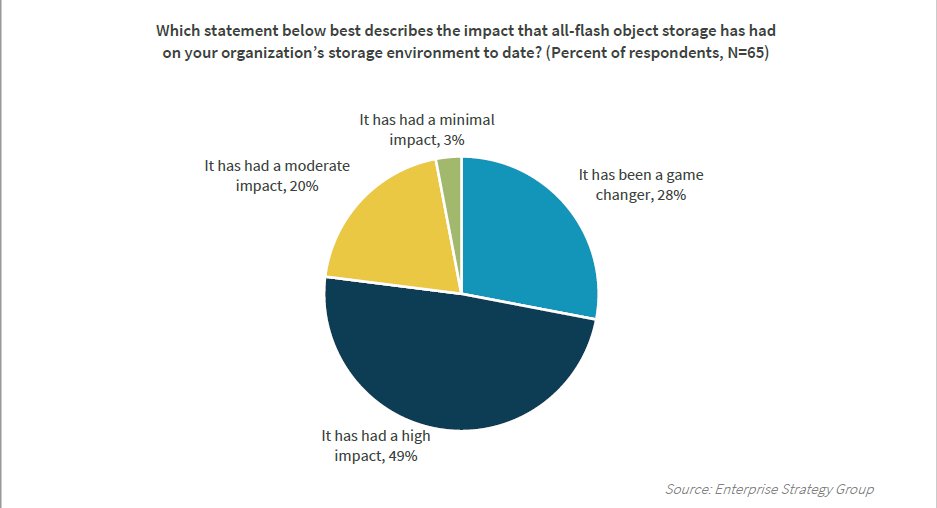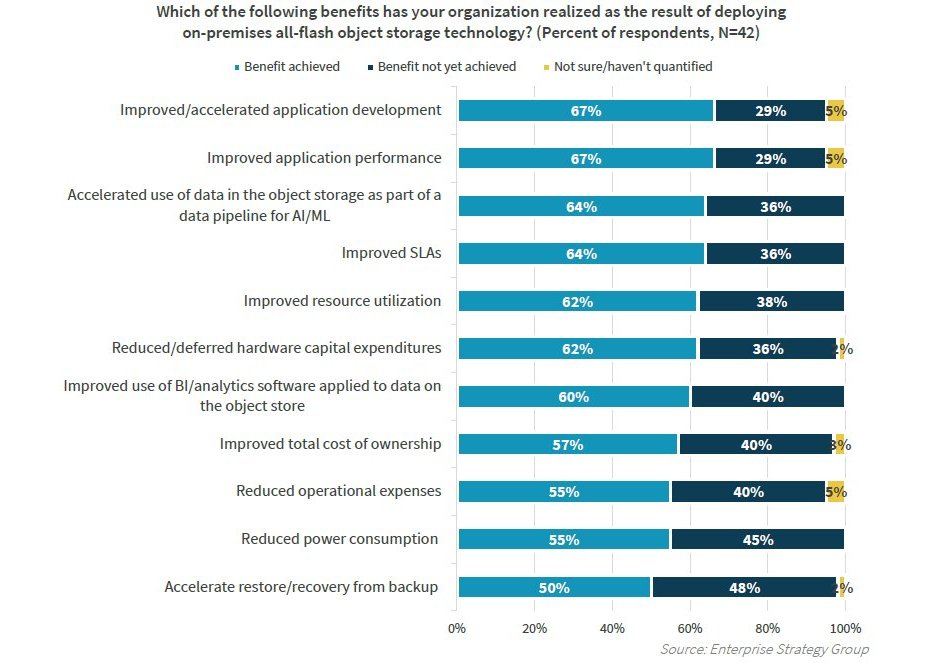Digital transformation initiatives and new workloads are driving all-flash object storage adoption in business, according to a report from IT research firm ESG.
Key findings of the report — The Digital Era Is Fueling Adoption of All-flash Object Storage — are that all-flash object storage is still in its early adoption phase, but ESG expects it to become pervasive. While 95 per cent of organisations are using flash storage systems, only 23 per cent of those use all-flash object storage. At the same time, 87 per cent of those not currently using it intend to evaluate the technology over the next year.

According to ESG, this is because users of all-flash object storage report a variety of benefits in areas such as application development, accelerating AI/ML environments, empowering business intelligence/analytics, and increased infrastructure performance and utilisation, while realising while lowering total cost of ownership (TCO).
The findings of the report are based on a survey of 205 IT professionals with responsibility for storage decisions and infrastructure strategies, in organisations of 1000 employees or more and IT environments with more than 500TB of active unstructured storage.
New workloads appear to be the primary driver of all-flash object storage adoption. The report suggests that factors such as the rise of digital initiatives, cloud-native container-based workloads, business intelligence, analytics, and machine learning, mean that organisations increasingly require high-performance access to large volumes of unstructured data.
According to ESG, all-flash object storage is playing the key role in providing the modern infrastructure necessary to support these new initiatives, with a combined 77 per cent of the respondents stating that all-flash object storage has either been a game changer for them (28 per cent) or has had a high impact on their organisation (49 per cent).

ESG picked out specific uses cases such as application development, AI, and BI/analytics where all-flash object storage has proved to have an ability to accelerate performance in a massive data storage environment, as shown in this chart. But it is also helping IT to deliver on key performance indicators such as improved SLAs, improved resource utilisation, reduced TCO, and lower operational expenses.

In other words, the use of all-flash object storage appears not to be a trade-off between capability and cost, but is instead a win-win approach that delivers improved capabilities and reduces TCO.
For these reasons and more, ESG concludes that all-flash object storage appears well on its way to becoming a foundation of the modern data storage ecosystem.








